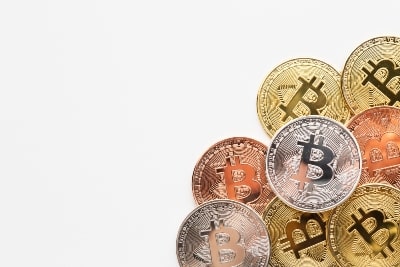What is Bitcoin ATM?

A Bitcoin ATM, also known as a BTM kiosk, allows people to use Bitcoin as a form of payment. They facilitate transactions using the blockchain and are anonymous. These ATMs enable more people to access financial services by giving them greater access to the unbanked. However, they have encountered several setbacks.
Cryptocurrency ATMs provide greater access to the underbanked
Having access to cryptocurrencies through a crypto ATM is a boon to the underbanked, as these machines can be used to withdraw cash without a bank account or credit card. These ATMs are legal in the United States, and operators are required to comply with Anti-Money Laundering standards. Nevertheless, they are not without risks. Since they are often located in areas where criminal activity is prevalent, they should be used with caution.
Bitcoin ATMs have been particularly successful because they are easy to use for non-technical people. The process of withdrawal and deposit is quick, and the transactions can be completed in as little as five minutes. Many users of these ATMs are members of underbanked and low-income communities. This means they often transact primarily in cash and use these machines to withdraw and deposit funds. According to the World Bank, there are approximately 1.7 billion people who are unbanked worldwide.
Without banking, people resort to risky measures to hold on to their money. Access to loans and bank accounts is a major factor in escaping poverty. Access to financial services is a prelude to other rights and opportunities. In this way, cryptocurrency ATMs provide greater access to the underbanked.
Cryptocurrency ATMs can be found in many convenience stores and gas stations. Crypto ATMs work by letting customers use their debit cards or cash to buy cryptocurrency. They also allow people to sell their cryptocurrency for regular cash, referred to as fiat currency.
The crypto ATM market is a growing one. Currently, the market is worth $55MM worldwide and is expected to grow by 58% by 2021. The US market is expected to grow at the fastest rate. In Mexico, 63% of the population is underbanked, and 90% of consumer transactions are cash-based. Mexico currently has 10 Bitcoin ATMs.
Cryptocurrency ATMs provide greater access for the unbanked, a group which generally falls into a lower income bracket. Without access to financial services, they do not have access to higher education or job opportunities. They also do not have access to credit cards. Thankfully, digital currencies such as Bitcoin provide a solution to this problem.
They facilitate blockchain-based transactions
Bitcoin ATMs allow users to buy and sell cryptocurrency without using an exchange. This way, consumers are forced to share fewer sensitive details. However, Bitcoin ATMs do have their disadvantages. First, they do not support the widest range of altcoins. Second, they sometimes run out of cash. And third, they are not anonymous as they were once believed. Indeed, Bitcoin ATMs have drawn regulatory scrutiny in recent years due to their use in money laundering.
Bitcoin ATMs can be either unidirectional or bidirectional. While Unidirectional Bitcoin ATMs only exchange digital currency, Bidirectional Bitcoin ATMs enable both buying and selling. Some machines can also transfer funds directly to a bank account. However, there is usually a slight delay, since bank-to-bank transfers take a while.
Bitcoin ATMs must be connected to the Internet and move money through a public key in the blockchain. Some machines use paper receipts and require a verification process when transacting large amounts of money. As a result, they are not owned by large financial institutions but still comply with similar laws and regulations.
The Bitcoin ATM looks similar to a normal ATM. Its touchscreen displays transaction details, and it may also have a credit card slot or a numerical keypad. Its location is a major factor in earning potential. If the ATM is located in a central location, it will likely have a high amount of foot traffic, and can generate profits of $30-$40k (USD). Conversely, remote locations may have lower profit margins. If possible, choose ATMs that offer support for other cryptocurrencies. This can increase revenue and payment volumes by 10-15 percent.
Bitcoin ATMs can also be used to sell crypto assets. Some only support this function when the user has a balance on the device, while others facilitate it beforehand by enabling the user to enter a PIN code referencing the sale. The ATM will then dispense cash or initiate a bank account transfer for the user.
Although Bitcoin ATMs are relatively new, they are becoming more common and prevalent. However, they are still rare in small towns and rural areas. A website called Coin ATM Radar lists over three thousand ATMs in 76 countries and 600 operators. It also includes a map of ATM locations. Users can use the search bar to find the ATMs closest to them.
They require identity verification
Most bitcoin ATMs require identification before you can withdraw your cash. The process is relatively similar across the various platforms, but be careful, as most require you to provide identification. Some bitcoin ATMs are known for being scams, so you should always stay vigilant and watch your back trail. There are several ways to prevent getting scammed, though.
You can start by knowing the laws and regulations surrounding Bitcoin ATMs. First, it’s important to know that the law requires that all BTMs follow KYC and Anti-Money Laundering regulations. These laws require operators to register with FinCEN and follow the Bank Secrecy Act. You’ll also need to know the identity of the Bitcoin ATM operator.
Many Bitcoin ATMs are located in brick-and-mortar stores or businesses. These machines are convenient and fast to use. They have security measures that protect your privacy, but they also charge a higher fee than online exchanges. Some ATMs charge up to 15% of the transaction value. The process at a Bitcoin ATM will vary slightly, but in general, it involves entering relevant information, scanning a QR code, and sending your Bitcoin to your wallet. While some bitcoin ATMs require identity verification for transactions of any size, others will only require an email address or phone number.
They are anonymous
Bitcoin ATMs are anonymous, and you don’t need to share your identity to withdraw your money. These machines have two main components: a computer that runs the software and a machine to display the amount of your transaction. The computer is usually located in the same place as the machine, and the two are connected by a wire.
Bitcoin ATMs may not be very common, but they are still one of the easiest and most anonymous ways to purchase bitcoin. You don’t even need to provide your ID to make a purchase; some BTC ATMs don’t even require facial or fingerprint identification. They also accept fiat currency. In addition, they are beginner-friendly. Regardless of whether you choose to buy bitcoin from an anonymous ATM or a reputable website, it is essential to be aware of the risks involved in purchasing bitcoin.
While the security of Bitcoin ATMs cannot be matched with the level of security of a traditional bank, there are several ways to prevent your transactions from being intercepted. First, you should make sure that you’re familiar with anti-money-laundering and Know Your Customer regulations. These laws are designed to prevent the illegal transfer of money and prevent the proliferation of fraudulent ATMs. Secondly, you should choose a Bitcoin ATM that complies with the regulations and policies of your state or jurisdiction.
Bitcoin ATMs are very convenient for people who do not want to deal with banks. You simply type in the amount of bitcoin you want to send, along with the recipient’s name and email address, and the machine will send the money to the recipient. Once the transaction is complete, you’ll receive a tracking link from your recipient. Bitcoin ATMs can be found all over the world, making it easy for people to buy bitcoin without the risk of being tracked. In Russia, you can find bitcoin ATMs, but the fees are generally very high. In Moscow, there are seven bitcoin ATMs, with the lowest charge being 5%. Moreover, many of these ATMs don’t display their fees, so you have no idea how much it will cost you to withdraw. So, it’s best to be prepared to pay for your purchase in advance and be sure that you’ll be able to withdraw your cash in a timely manner.


